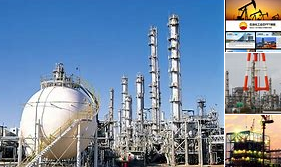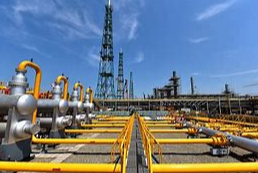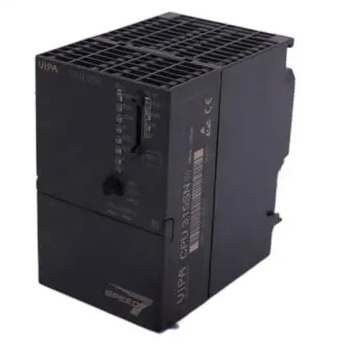Understanding natural gas
Natural gas is the third largest energy resource consumed by human society today, with annual production and consumption of more than 4 trillion cubic meters. In recent years, in order to solve the climate problem and promote the energy transition, the production and consumption of natural gas has been attached importance by all countries in the world, the status of natural gas in the world energy consumption has been rising, and the importance of natural gas in the global energy market has become increasingly apparent, and the natural gas industry has entered the "golden age". On March 3, 2023, the Oil Price website published Michael Cohen's article "Natural Gas: A Comprehensive Guide to the World's Most Important Fuel," which provides a brief but relatively comprehensive overview of natural gas. In order to give you a preliminary understanding of natural gas as a clean energy resource, we have translated and organized Cohen's article, and added the data map of the U.S. Energy Information Administration on natural gas to the article, making the introduction of natural gas in this article more complete, comprehensive and intuitive.
Natural gas is a fossil fuel made up of methane and other hydrocarbons formed by the decomposition of organic matter; It can be mined through a variety of methods as an abundant and relatively cheap source of energy for heating, cooking and power generation, among other things; While natural gas has its benefits, it can also cause environmental problems such as greenhouse gas emissions and water pollution.

Natural gas is a fossil fuel that has been used for centuries in homes, businesses and industry. It is a clean fuel that emits fewer greenhouse gases than other fossil fuels such as coal and oil. In this article, we'll explore what natural gas is, where it comes from, how many uses it has, and why it's important
1.What is natural gas?
Natural gas is a mixture of hydrocarbons that exists deep beneath the earth's surface. It is formed from the remains of plants and animals that lived millions of years ago, and over time, high temperatures and pressures transformed these organic materials into the fossil fuel we know as natural gas.
The main component of natural gas is methane (CH4), which accounts for 70-90% of its composition. Other components include ethane (C2H6), propane (C3H8), butane (C4H10), and pentane (C5H12), compounds that give natural gas its unique odorless, colorless properties.
2. Where does the gas come from?
There are several different types of natural gas, each with its unique composition and properties, and the most common types of natural gas include:Conventional natural gas: This is the most common type of natural gas, extracted from underground rock formations, or associated with oil resources.
Shale gas: This type of natural gas is found in shale rock formations and requires hydraulic fracturing or "fracking" to extract it.
Tight gas: This type of gas is found in low-permeability sandstone, limestone, or dolomite rock formations and requires hydraulic fracturing to extract it.
Each type of natural gas has its own unique characteristics that make it suitable for different applications. For example, conventional natural gas is commonly used for heating and cooking in homes and businesses, while shale gas and tight gas are often used for electricity generation due to their abundance and lower cost than conventional natural gas.
3. What is natural gas used for?
Natural gas has many uses in different sectors of the economy, and some of the most common uses include:
Heat the house. One of the most common uses of natural gas is heating. Natural gas furnaces are efficient and cost-effective, making them a popular choice for homeowners, and natural gas can also be used to heat water for showers and baths.
In addition to residential heating, natural gas is also used for commercial and industrial heating, with many businesses using natural gas to heat buildings and warehouses.
Generate electricity. Natural gas is also an important source of fuel for power generation. Power plants use natural gas to generate electricity by burning it in a turbine or generator, and in the process produce steam that drives the generator to generate electricity.
Natural gas-fired power plants are increasingly popular because of their high efficiency and low emissions compared to other fossil fuels such as coal.
Transport. Natural gas can also be used as a transportation fuel, of which compressed natural gas (CNG) and liquefied natural gas (LNG) are two types of natural gas that can be used as a transportation fuel.
CNG is mainly used in light vehicles, such as cars and trucks, where it is stored in high-pressure tanks. Liquefied natural gas, mainly used in heavy vehicles such as buses and trucks.
The manufacturing industry. Natural gas is also an important raw material in many manufacturing processes, where it is used as a feedstock for chemicals such as ammonia and methanol. Eventually, these chemicals are used to make products such as fertilizers, plastics and pharmaceuticals.
In addition to chemical production, natural gas is also used in the production of glass, steel and ceramics.
Home. Finally, natural gas has many household uses, making it an essential part of our daily lives. Due to their efficiency and ease of use, natural gas stoves are common in many homes. Natural gas dryers are also popular because of their short drying times.
Natural gas fireplaces bring warmth and a homey atmosphere on cold winter nights, while outdoor barbecue stoves that use natural gas provide great convenience when cooking outdoors.

4. How is natural gas processed, stored and transported?
The following are the ways in which natural gas is processed, stored and transported:
Processing of natural gas. Once extracted from the ground, natural gas must go through several processing steps to remove impurities and separate it into its different components. The first step in this process is usually dehydration, which removes all water vapor that may be present in the gas.
Next, it passes through a series of filters to remove impurities such as sulfides, carbon dioxide and other pollutants from the gas. If left untreated, these impurities can cause corrosion or damage to pipes.
After purification, the gas is usually compressed to increase transport pressure, which makes it easier to transport large volumes of gas for export by pipeline or ship.
Liquefied natural gas. Liquefied natural gas (LNG) converts natural gas from a gas to a liquid by cooling it to about -260°F(-162°C), a process that allows gas to be transported and stored in a more compact and efficient form. The liquefaction process has the following steps:
Pre-treatment: The natural gas is first cleaned to remove any impurities, such as acid gases, water, and heavy hydrocarbons, that may freeze or cause other problems during liquefaction.
Compression: Pretreated natural gas is compressed to increase the pressure, thereby increasing the temperature of the gas.
Cooling: The compressed natural gas is then cooled using a heat exchanger that uses a refrigerant such as propane or ethylene to lower the gas temperature to around -120°F(-84°C).
Liquefaction: Once the temperature drops low enough, the natural gas condenses into a liquid state and is stored in insulated tanks for easy transportation.
Loading and transportation: LNG can be transported on dedicated ships or trucks to its final destination, where it can be regasified into a gas, transported through pipelines or used as a fuel for power generation.
Converting natural gas to LNG requires specialized equipment and infrastructure, but LNG offers significant advantages in terms of storage and transportation efficiency compared to traditional gaseous transportation methods.
Storage of natural gas. There are three main methods of storing natural gas: underground storage or surface storage tanks. Underground storage facilities, often used to store large amounts of natural gas for later use during periods of peak demand, often include abandoned oil or gas fields, salt caverns, or aquifers that have been converted into gas storage.
Surface storage tanks, often used for smaller-scale storage needs, can be found in industrial sites or residential properties used for natural gas heating or cooking.
Floating gas storage, another form of surface storage, involves the storage of liquefied natural gas in large floating tanks, which are often referred to as floating storage and regasification units (FSRUs). Floating storage and regasification units, which can be moored at sea or in ports, allow them to receive LNG from ships and store it until it is used when needed. This type of storage is gaining popularity due to its flexibility and relatively low cost compared to other forms of LNG storage. In addition, floating storage and regasification units can be used for regasification, which is the conversion of liquefied natural gas back to a gaseous state for delivery by pipeline or other means of transportation.
Transportation of natural gas. Natural gas can be transported by pipeline, truck, ship, or rail vehicle, depending on the distance and volume to be transported.
Pipelines are the most common way to move large quantities of natural gas over long distances, spanning thousands of miles across countries and even continents.
Trucks and rail vehicles, often used for shorter distances or when they cannot be transported by pipeline, these vehicles usually transport compressed natural gas or liquefied natural gas in specially designed containers.
Ships are another way to transport LNG across oceans to international markets. LNG carriers use insulated tanks that keep the liquid at extremely low temperatures in order to maintain the condition of the liquid during transit.
To summarize the above, the storage and transportation of natural gas requires specialized equipment and infrastructure to ensure the safe delivery of natural gas from extraction sites to end users around the world. As demand for this valuable energy resource continues to grow, technological advances will continue to improve the efficiency and safety of all aspects of natural gas production, storage and transportation.

5. Why is natural gas important?
Natural gas plays a vital role in meeting our energy needs, while also reducing our reliance on dirtier fossil fuels such as coal and oil. In fact, the natural gas and shale revolutions have played a key role in helping America achieve energy independence. Here are some reasons why natural gas is important:
Clean burning: Natural gas emits fewer greenhouse gases when burned than other fossil fuels.
Abundant reserves: There are abundant reserves of natural gas all over the world.
Reliable: Many parts of the world have excellent natural gas infrastructure.
Flexible: Natural gas can be used for a variety of applications in different industries.
Cost effective: The price of natural gas has historically been lower than other fossil fuels.
As countries around the world strive to transition to cleaner energy sources, natural gas will continue to play an important role in meeting our energy needs while reducing our environmental impact.
6. The negative impact of natural gas on the environment
As a fossil fuel, natural gas is seen as a cleaner alternative to coal and oil. While it does emit fewer pollutants than other fuels, it still has a significant impact on the environment. Here are the negative impacts of natural gas on the environment and climate change:
Air pollution. The combustion of natural gas produces nitrogen oxides, which cause smog and breathing problems. It also releases volatile organic compounds, which can cause health problems such as headaches, nausea, and eye irritation. Methane is a highly harmful greenhouse gas that is released when natural gas is extracted, processed and transported.
Water pollution. Fracking, a method of extracting natural gas from shale rock formations, involves mixing large amounts of water with chemicals that can contaminate nearby water sources. Leaks during transportation can also contaminate water sources.
Land use. Construction and maintenance of pipelines and drilling sites can destroy ecosystems and wildlife habitats. Hydraulic fracturing, or fracking, requires a lot of land for drilling.

7. Advantages and disadvantages
Natural gas does have some advantages over other fossil fuels: when burned as an energy source, it emits fewer pollutants; It can be used as a backup power source for renewable energy systems such as wind and solar.
Of course, these advantages must be weighed against the environmental impact: air pollution from gas flaring, which causes respiratory diseases; Water pollution from fracking can contaminate drinking water sources; Methane leaks have a major impact on climate change.
As a byproduct of oil production, natural gas has historically been viewed as a nuisance. Natural gas is produced along with oil when drilling and extracting oil, but because it is not always economically feasible to separate, extract, and transport the gas, it is sometimes disposed of by flaring off. During combustion, natural gas releases carbon dioxide and other harmful gases into the atmosphere, leading to climate change and air pollution.
By capturing natural gas, rather than burning it away as waste, we can reduce our reliance on traditional fossil fuels while mitigating the environmental damage caused by release combustion.
8. Natural gas as a transition fuel
Often, natural gas is referred to as a "transition fuel" because it can serve as a temporary solution on the road to a more sustainable energy future. As we work to reduce our reliance on fossil fuels and switch to renewable energy sources like wind and solar, natural gas can play an important role in helping us move away from dirtier fuels like coal and oil.
One reason it's considered a "transition fuel" is that natural gas emits fewer pollutants than coal or oil when used as an energy source for combustion production, which means it can help mitigate air pollution and improve public health as we continue to develop clean energy sources. As a backup power source for renewable energy systems such as wind and solar, natural gas can also help ensure that there is always a reliable supply of electricity, even when weather conditions are unfavorable to these renewables.
In a short space and through 8 aspects, this paper gives a brief but comprehensive introduction to natural gas. Although this is only a short article of popular science, it is enough to provide basic knowledge and background for us to have a deeper understanding of the current complex global natural gas market.
- EMERSON
- Honeywell
- CTI
- Rolls-Royce
- General Electric
- Woodward
- Yaskawa
- xYCOM
- Motorola
- Siemens
- Rockwell
- ABB
- B&R
- HIMA
- Construction site
- electricity
- Automobile market
- PLC
- DCS
- Motor drivers
- VSD
- Implications
- cement
- CO2
- CEM
- methane
- Artificial intelligence
- Titanic
- Solar energy
- Hydrogen fuel cell
- Hydrogen and fuel cells
- Hydrogen and oxygen fuel cells
- tyre
- Chemical fiber
- dynamo
- corpuscle
- Pulp and paper
- printing
- fossil
- FANUC
- Food and beverage
- Life science
- Sewage treatment
- Personal care
- electricity
- boats
- infrastructure
- Automobile industry
- metallurgy
- Nuclear power generation
- Geothermal power generation
- Water and wastewater
- Infrastructure construction
- Mine hazard
- steel
- papermaking
- Natural gas industry
- Infrastructure construction
- Power and energy
- Rubber and plastic
- Renewable energy
- pharmacy
- mining
- Plastic industry
- Schneider
- Kongsberg
- NI
- Wind energy
- International petroleum
- International new energy network
- gas
- WATLOW
- ProSoft
- SEW
- wind
- ADVANCED
- Reliance
- YOKOGAWA
- TRICONEX
- FOXBORO
- METSO
- MAN
- Advantest
- ADVANCED
- ALSTOM
- Control Wave
- AB
- AMAT
- STUDER
- KONGSBERG
- MOTOROLA
- DANAHER MOTION
- Bently
- Galil
- EATON
- MOLEX
- Triconex
- DEIF
- B&W
- ZYGO
- Aerotech
- DANFOSS
- KOLLMORGEN
- Beijer
- Endress+Hauser
- MOOG
- KB
- Moxa
- Rexroth
- YAMAHA
- Johnson
- Westinghouse
- WAGO
- TOSHIBA
- TEKTRONIX
- BENDER
- BMCM
- SMC
- HITACHI
- HIRSCHMANN


Email:wang@kongjiangauto.com


































































































































